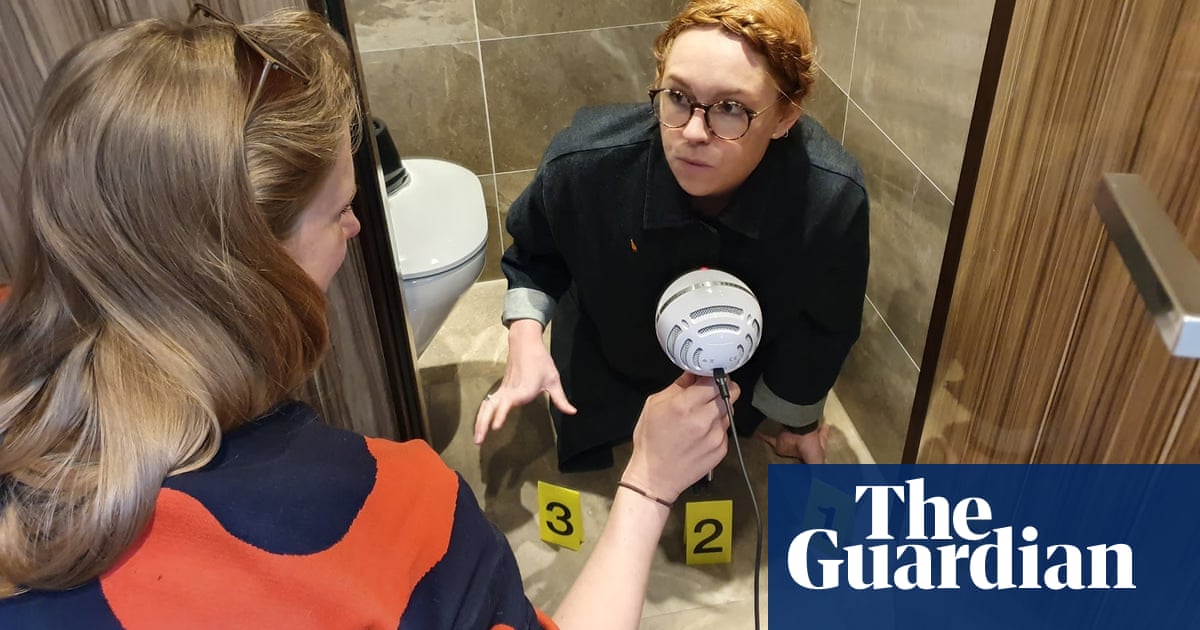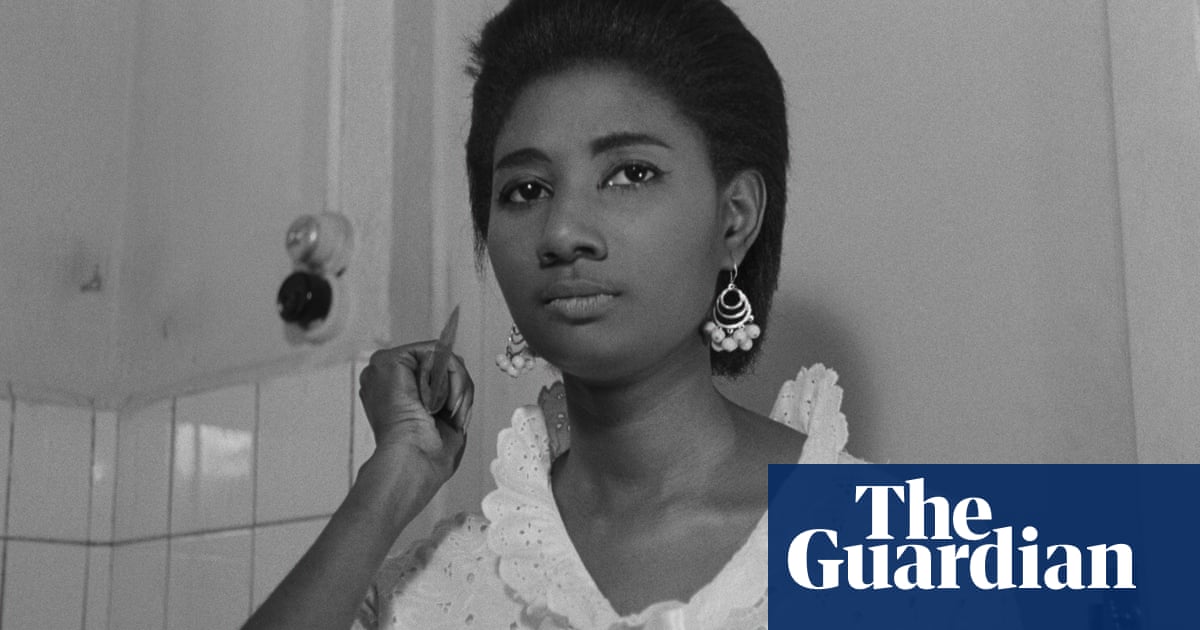
Given that it launched the film careers of the then little known Rosanna Arquette, the entirely unknown Aidan Quinn and some singer called Madonna, 1985’s Desperately Seeking Susan still stakes a good claim to be one of the canniest casting jobs of all time. And that’s before you get to the then even less known supporting actors: Laurie Metcalf as Arquette’s tacky sister-in-law! John Turturro as the cheesy club MC! John Lurie barely visible as a saxophone-playing neighbour! Giancarlo Esposito in a blink-and-you’ll-miss-it role as a street salesman!
It’s an astonishing roll call of future talent from when they were still young and hungry in Manhattan. And that’s because Desperately Seeking Susan isn’t only set in a time when there were at least as many artists as rats living in New York City, it was a product of that time, too. “The city was falling apart and downtown there were aspiring artists because rent was so cheap. So I wanted to populate the film with people who were authentic to that time. I didn’t care whether someone in Kansas would recognise them, but New Yorkers would know they were New Yorkers,” Susan Seidelman, the film’s director, tells me by video chat from her home in the New Jersey countryside, to which she and her husband recently moved after several decades in downtown New York. (“The area had changed,” she explains with the jadedness of a true New Yorker, albeit one now in New Jersey.)
Desperately Seeking Susan tells the story of a bored suburban housewife, Roberta (Arquette), who becomes obsessed with someone called Susan (Madonna), whose boyfriend Jim (Robert Joy) leaves her messages in the personal ads section of the newspaper. Roberta follows Susan around the city and starts dressing like her – an analogue version of someone following an influencer on Instagram. After various screwball plot twists, Roberta is mistaken for Susan by Des (Quinn), a friend of Jim’s, and chaos ensues with the lightest, most romantic of touches.
In retrospect, it looks inevitable that the film would become an enduring classic, a kind of Umbrellas of Cherbourg of 1980s SoHo. But that felt so improbable as to be unimaginable to Seidelman back when she was making the film. It was only her second job after her debut Smithereens, a film about the post-punk New York scene that starred Richard Hell, and she was hailed as part of a new wave of independent film-makers. “I call it no wave, because we had no money,” she says. But Desperately Seeking Susan was a massive success, propelled in no small part by Madonna becoming a superstar just before it opened, after the release of her second album, Like a Virgin.
And here Seidelman is, almost 40 years later, having to spend her afternoon talking to me about a film she made when she was 33 because it’s being released for the first time on Blu-ray. I tell her I had originally planned to ask if she minds still being defined by a movie she made so long ago, but then I noticed beforehand that her Instagram handle is @desperately_seeking. So presumably not. “Well, I’ve answered a lot of questions about Madonna over the years, that’s true,” she says with a laugh that suggests heavy understatement. “But no, I don’t mind. It’s thrilling when you make something that passes the test of time. Because I didn’t even think in those terms when I was making it. I just wanted to put my finger on the pulse of the time.”
Seidelman’s determination to give the film a slick of authenticity means that the up-and-coming actors she decided not to cast are almost as astonishing as the ones she did: Ellen Barkin, Melanie Griffith, Jennifer Jason Leigh and Jamie Lee Curtis were all rejected for the role of Susan, as they felt too LA. Instead, Seidelman persuaded the producers to let her cast a singer and dancer with no acting experience, who happened to live down the street from her. Madonna had released Borderline but nothing else, and Seidelman thought she had “the right attitude” for the character. It was the equivalent of buying Apple stock the week before Steve Jobs invented the Macintosh. Over the course of the nine-week shoot, Madonna went from an unknown Seidelman could film walking around the East Village without any trouble to, in the last week, requiring security because Rolling Stone magazine had just put her on the cover.
Did that change the dynamic on set, given that one person in the ensemble was suddenly so much more famous than the others? “Uhhh, not so much for me. It might have been more difficult for Rosanna, but that’s her conversation,” says Seidelman.
Arquette is wonderful in the film as the stifled housewife. But Madonna’s performance is irresistible. You watch her grifting her way around town while looking completely gorgeous and – like Roberta – you just want to be her. Incidentally, another aspiring actor Seidelman rejected for the film was Bruce Willis, who got down to the last two actors for the role of Jim, meaning audiences were very nearly treated to the tantalising sight of Madonna and Willis making out on screen.
But Madonna in Desperately is – how to put this delicately – pretty similar to the Madonna audiences would see six years later in her documentary In Bed With Madonna. So is it fair to say she was just playing herself on screen? “No, I don’t think so,” says Seidelman loyally. “I mean, she was playing a variation of herself, and she was bringing her attitude to it. But she’s saying scripted lines, right? It’s not improvising.” The two women stayed in touch for a few years afterwards. Seidelman went to Madonna’s wedding to Sean Penn, and Madonna sent Seidelman flowers when she was making her next film, Making Mr Right, starring John Malkovich. But why does Seidelman think no other director has got a good performance out of her?
“I thought she did a good job in Evita, maybe because she related to that character. I think she needed to find the thing that she connected to. I didn’t see Shanghai Surprise but I did see Who’s That Girl, and I think she was quite famous at that point. When you’re dealing with someone who’s that famous and has an entourage and ideas, and some of those ideas may be good and some not so good, it’s harder,” she says.
Seidelman grew up in suburban Pennsylvania, “which is probably what drew me to Desperately Seeking Susan, as it has the two sides to me: the suburbs and downtown,” she says. She made some more comedies after Desperately Seeking Susan but the 1989 film She-Devil, adapted from Fay Weldon’s classic The Life and Loves of a She-Devil, sparked a real backlash. It seemed like a project made for her, as it has so many of the same themes as Desperately: a woman trying to break out of society’s role for her, and two women pitched against each other – this time played by the somewhat improbable pairing of Meryl Streep and Roseanne Barr.
The critics were scathing, and Seidelman watched them panning her film on TV from her hospital bed while she was in labour with her son, Ozzy. Now that film can be seen as a precursor to the run of 1990s female revenge comedies including The First Wives Club and Death Becomes Her. So why does Seidelman think her movie was given such a rough time?
“I think some people were offended that I put a heavy woman in the lead and made her heroic. I was shocked at the number of critics – who were 99.99% male – who were offended at her physicality,” she says.
Was Barr difficult to direct? “Not at all. I found her very, very easy to work with. Again, I think I was lucky in that, even though she had become a huge TV star, she had never made a movie before. And I think working with Meryl Streep kinda puts everyone in their place.”
Seidelman took a few years out to look after her son before returning to direct more films and then work on the first season of Sex and the City. She directed the pilot episode after being approached by the producer, Darren Starr. “I think Darren was a fan of Desperately Seeking, and this was a New York show with female stories so he wanted what I could bring to it. But the show got a little less gritty and more glossy in later seasons,” she says.
Did she like that less? “Um, well, it’s what they wanted to do. I didn’t watch as much of season four or five because it became a little predictable. But you can’t argue with success,” she says. All the same, it’s not very hard to imagine Madonna-as-Susan standing over Seidelman’s shoulder, cigarette in mouth, smirk in place, saying: “Sure you can.”












